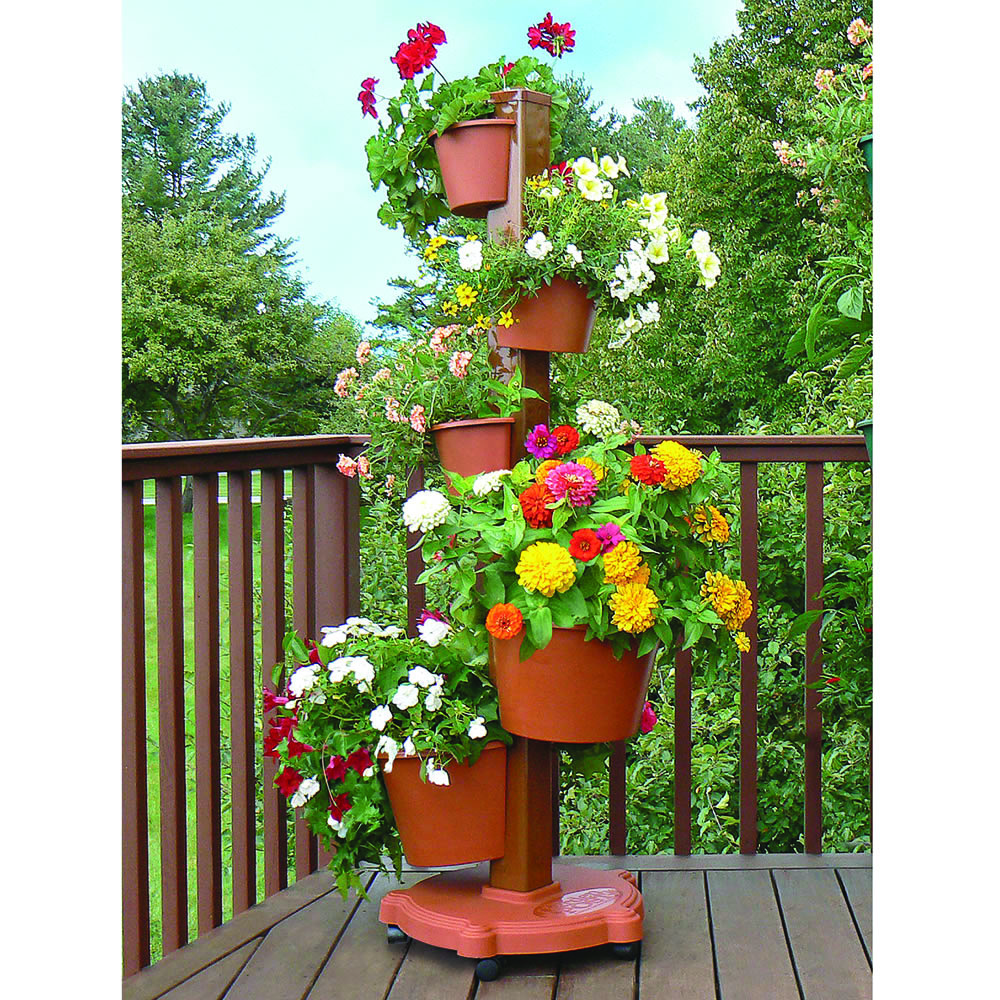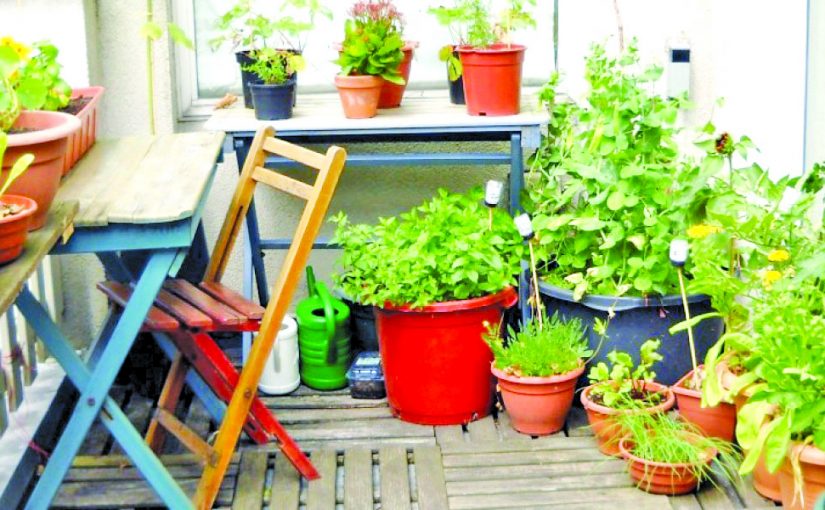By Werner Egipsy Souza
Urban or semi-urban farming is catching on because most everyone today is worried about chemicals in the food they buy. More and more folk are thinking why can’t I grow my own food at home with whatever space I have by way of a front or back yard, compound, even balcony space, and window space like they’re doing in the countries of the West? You can and must make efforts to grow your own vegetables, herbs, spices and whatever else is possible to make a difference to your health.
Instead of buying vegetables, why not just grow them at home? Organically cultivated vegetables taste so much more healthier that what comes from the marketplace! They are not only richer in nutrient values but safe for eating and not injurious to your health. You don’t need to acquire a regular garden to grow them, you may also grow vegetables, herbs and even fruit in pots on your balcony or terrace if you are lucky enough to have one. Urban terrace gardens are all the rage nowadays with people harvesting all kinds of veggies, fruit, herbs, lettuce for their personal consumption as also sharing with friends.
There are some really interesting ways to incorporate vegetable crops on the terrace:
- Creating a vegetable garden in pots
Use terracotta pots to plant whatever you wish. Choose large, deep pots designed for water drainage; avoid thin and poor quality plastic pots because they heat up quickly, drain poorly and also deteriorate quickly in tropical climate like ours. - Soil
Use good quality soil for healthy plants and harvest of vegetables and whatever else you have planted. Prepare the soil yourself. A good potting mix recipe would contain good top soil, compost, sand and coco peat (or coconut coir). One recipe is: 1 part peat moss or mature compost, 1 part garden loam or topsoil, 1 part clean builder’s sand. The organic material in the above mix provides structure and the sand component improves drainage. A balanced, slow-release organic fertilizer may also be added to the mix. Another organic recipe for gardening soil is: Peat moss or coconut coir, Perlite, bone meal, ground limestone, blood meal. Use most of the food waste from your kitchen house in composting soil for your home garden.
The vegetables we may grow in pots safely are tomatoes, cucumbers, radishes, beans, potatoes, onions, carrots, beetroot, lettuce, garlic, chilies, peppers, gourds, eggplant or brinjal, karipata, and much more. Some folk are growing strawberries right here in Goa. - Create raised beds on terrace
If you’re looking for practical as well as stylish way to make a terrace vegetable garden, make a raised bed, in raised beds you’ll be able to grow a lot of vegetables in comparison to what you may grow in containers. Plants thrive better with less care and maintenance, plus it is cheaper. The raised bed on the terrace does not differ fundamentally from those you see in a regular garden.
In well-stocked hardware stores or even online shops you will find special raised beds for terraces, you’ll only need to configure which one is better for you or you can make your own raised bed, which is very easy. Just ensure before installing it that the surface of terrace below it is waterproofed efficiently or not.
Fill raised bed with soil. If you fill the raised bed with soil, consider to prevent voles and pests from entering the bed. To make soil, just mix quality garden soil, ripe compost and manure. Probably the greatest advantage of raised bed is of course its height and wideness on terrace. Gardening can hardly be more convenient. - Integrate vegetable patch on the terrace
You can also integrate a vegetable patch on your terrace and grow vegetable on the surface itself. But doing this is only good on large rooftops. Vegetable patch is similar to making a normal garden bed. The integrated bed should be filled normally with soil like a regular garden bed. An addition of compost in soil is a perfect natural fertilizer for most of the plants. - Creating a vegetable terrace garden in planter boxes
Flower boxes and planters can be used to create a vegetable garden. You can hang these on an existing railing or set them just on the floor. How do you use them is entirely up to you. Again, do not use ordinary garden soil in these planter boxes, either use quality potting mix or compost rich soil. Fertilizing is also important to improve productivity but it varies according to plants: peppers and tomatoes are heavy feeders, whereas green leafy vegetables do not need much fertilizer.
Plants for flower boxes are cucumbers, tomatoes, garlic, chilies, herbs, radishes, bush beans, greens. Cucumbers, tomatoes and beans require a climbing aid, so that the plants do not break. - Repurpose Sandboxes
A sandbox is not just for games. From a small simple wooden sandpit, you can also make a hefty vegetable patch. This looks not only decorative, but provides your plants an optimal space to thrive. Instead of using gravel for drainage, just fill the quality compost with soil. In the sandbox you can grow all sorts of small vegetables and herbs, mostly low growing that spreads too much. Radishes, herbs, garlic, lettuce, spinach, ginger. - Optimise Vertical Space
Your main challenge is how smartly you utilize your vertical space to double up the space you have on your terrace, make a plan on how you should do this, if you have walls, hang planters on it. Grow vegetable shrubs and vines like beans, squashes, gourds and tall tomato varieties near the walls and railings. This way they’ll not only get support but also grow outside and upward and you’ll save a lot of your space. Use old shelves, racks to keep pots and buy pot holders, put them around the corners.
On these you can grow herbs to improve the taste of salads and recipes you’ll prepare, you can also grow lot of flowers for ornamental views and remember some flowers are edible, make for wonderful garnish to colour up a plate of food.

Tips for the prolific terrace vegetable garden
Fertilize vegetables regularly with good quality organic fertilizer. With some research and experience you’ll be able to find out which type of fertilizer you should feed to specific vegetables.
Water plants regularly and deeply.
Check plants regularly for pests.
Prune vegetable plants to keep them in good shape and in healthy growth. Look out for suckers, especially in tomatoes and pinch them off immediately if found one.
For vegetables, it is always good to grow them on the Southern or Western face, so the plants will have enough sun and can thrive easily. But too much sun is not good either. It is advisable to provide afternoon shade to plants. Whether vegetables are growing in raised beds or in a pot, certain care is needed. Through experience you will learn how, why and what you should do to be rewarded by a successful home kitchen garden of your very own to rejoice in when the vegetables, herbs and fruit are ready for harvesting! No joy like that.
